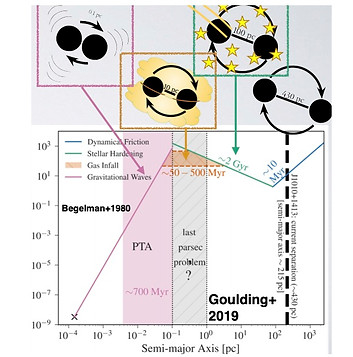top of page



JENNY E. GREENE
ASTRONOMER
BLACK HOLE BINARIES
Do supermassive black holes stall at ~1 pc? Or do they merge in a Hubble time? And can we use gravitational waves as a new tool to understand supermassive black hole evolution? See Casey-Clyde+2022, Goulding+2019, Wang+2017, Ju+2013


Goulding, Pardo et al. 2019 used the existence of one close pair of supermassive black holes to make infrences about the gravitational wave background

Andrew Casey-Clyde and Chiara Mingarelli (UConn) are collaborators thinking about tying the evolution of supermassive black holes to the gravitational wave background
bottom of page